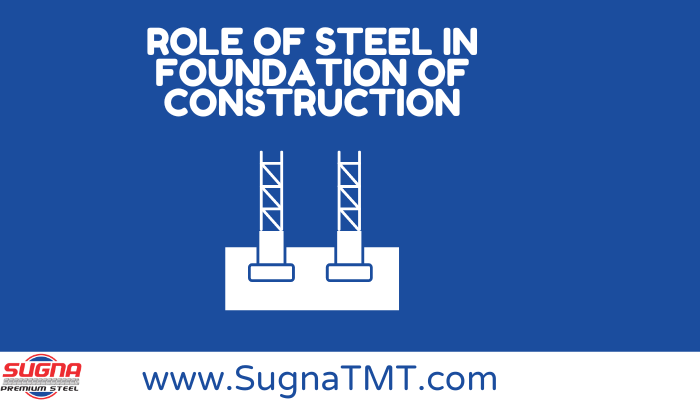Steel plays a pivotal role in the foundation of construction, offering unparalleled strength, stability, and sustainability. From towering skyscrapers to intricate bridges, steel serves as the backbone of modern infrastructure, providing the structural integrity necessary to withstand the test of time. In this article, we’ll explore the multifaceted role of steel in construction foundations, highlighting its key attributes and benefits.
The Role of Steel in the Foundation of Construction

Strength and Durability
Structural Integrity
Steel’s inherent strength and durability make it an indispensable material for construction foundations. Unlike traditional materials such as wood or concrete, steel possesses remarkable load-bearing capacity, allowing for the construction of robust and resilient structures. Whether supporting heavy machinery in industrial facilities or providing the framework for high-rise buildings, steel foundations ensure structural integrity and longevity.
Resistance to Environmental Factors
One of steel’s greatest advantages is its resistance to environmental factors such as corrosion, moisture, and pests. Unlike wood, which is susceptible to rot and decay, and concrete, which can crack and spall over time, steel remains unaffected by moisture and fungal growth. This inherent resilience makes steel foundations ideal for projects in challenging environments, including coastal areas prone to saltwater corrosion and regions with high humidity levels.
Stability and Support
Load-Bearing Capacity
Steel’s exceptional load-bearing capacity enables it to support heavy loads with minimal deflection or deformation. This is particularly critical in high-rise construction, where the foundation must bear the weight of multiple floors and occupants. By distributing weight evenly and efficiently, steel foundations ensure structural stability and prevent settlement or subsidence, even under extreme conditions such as seismic activity or high winds.
Flexibility and Adaptability
Another key advantage of steel foundations is their flexibility and adaptability to changing site conditions and design requirements. Unlike concrete, which must be poured and cured on-site, steel components can be prefabricated off-site and assembled with precision, reducing construction time and minimizing disruption to surrounding areas. Additionally, steel’s modular nature allows for easy modifications and expansions, enabling builders to accommodate evolving project needs without compromising structural integrity.
Sustainability and Environmental Impact
Recyclability
Steel is one of the most recycled materials in the world, with a recycling rate exceeding 90%. This inherent recyclability reduces the need for virgin steel production, conserves natural resources, and minimizes energy consumption and carbon emissions. By choosing steel foundations, builders can contribute to a circular economy and mitigate the environmental impact of construction activities.
Longevity
The longevity of steel foundations further enhances their sustainability credentials, as they require minimal maintenance and replacement over time. Unlike wood, which may deteriorate and require frequent repairs, or concrete, which may degrade and spall, steel remains structurally sound for decades, if not centuries, with proper care and maintenance. This longevity not only reduces lifecycle costs but also minimizes waste generation and resource consumption associated with replacement materials.
Conclusion
In conclusion, steel plays a critical role in the foundation of construction, offering unmatched strength, stability, and sustainability. From supporting towering skyscrapers to spanning vast bridges, steel foundations provide the structural backbone necessary for modern infrastructure projects. With its exceptional durability, resistance to environmental factors, and recyclability, steel emerges as a preferred choice for builders seeking long-lasting and environmentally conscious solutions.

